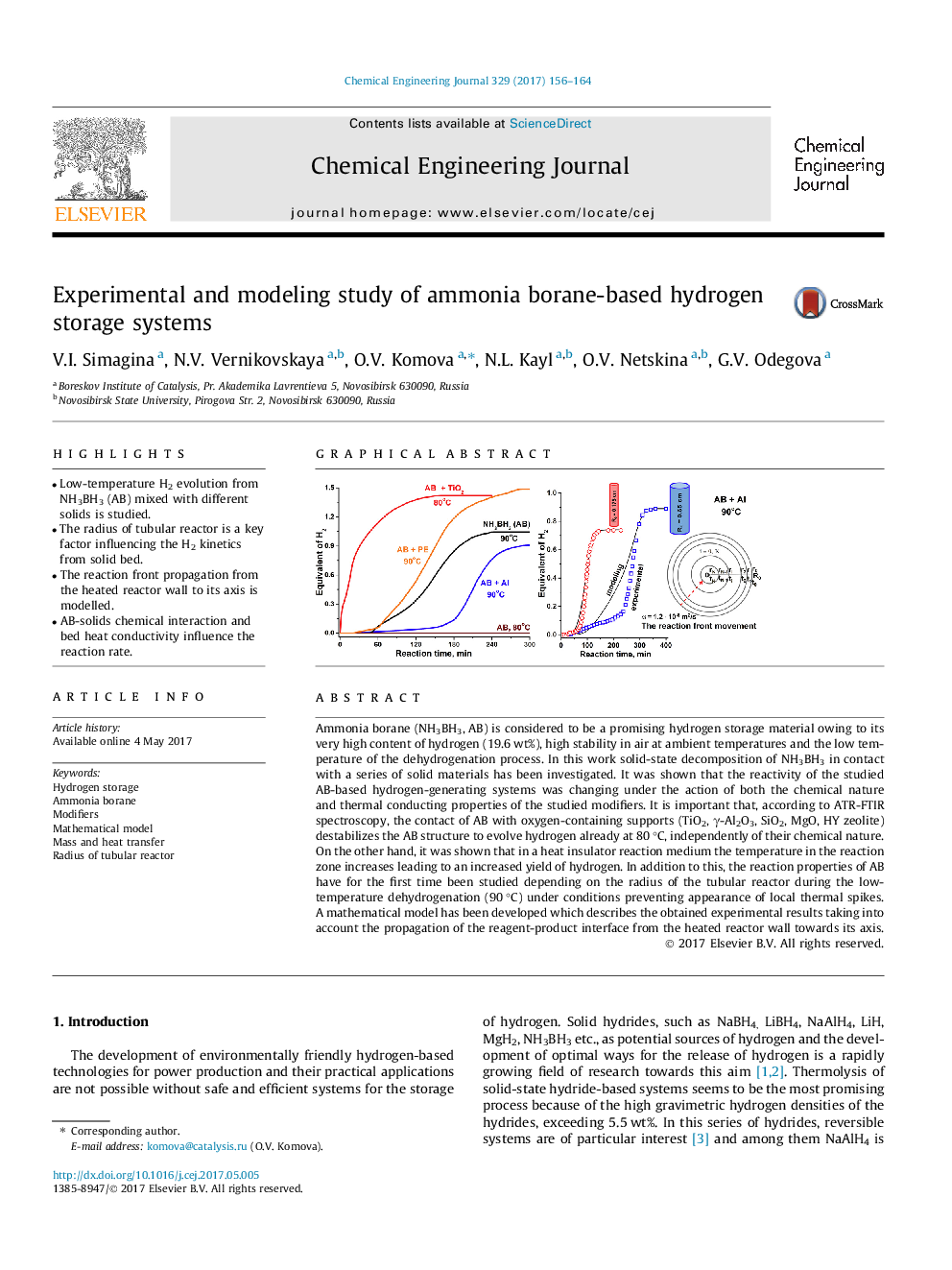| Article ID | Journal | Published Year | Pages | File Type |
|---|---|---|---|---|
| 6465402 | Chemical Engineering Journal | 2017 | 9 Pages |
â¢Low-temperature H2 evolution from NH3BH3 (AB) mixed with different solids is studied.â¢The radius of tubular reactor is a key factor influencing the H2 kinetics from solid bed.â¢The reaction front propagation from the heated reactor wall to its axis is modelled.â¢AB-solids chemical interaction and bed heat conductivity influence the reaction rate.
Ammonia borane (NH3BH3, AB) is considered to be a promising hydrogen storage material owing to its very high content of hydrogen (19.6 wt%), high stability in air at ambient temperatures and the low temperature of the dehydrogenation process. In this work solid-state decomposition of NH3BH3 in contact with a series of solid materials has been investigated. It was shown that the reactivity of the studied AB-based hydrogen-generating systems was changing under the action of both the chemical nature and thermal conducting properties of the studied modifiers. It is important that, according to ATR-FTIR spectroscopy, the contact of AB with oxygen-containing supports (TiO2, γ-Al2O3, SiO2, MgO, HY zeolite) destabilizes the AB structure to evolve hydrogen already at 80 °C, independently of their chemical nature. On the other hand, it was shown that in a heat insulator reaction medium the temperature in the reaction zone increases leading to an increased yield of hydrogen. In addition to this, the reaction properties of AB have for the first time been studied depending on the radius of the tubular reactor during the low-temperature dehydrogenation (90 °C) under conditions preventing appearance of local thermal spikes. A mathematical model has been developed which describes the obtained experimental results taking into account the propagation of the reagent-product interface from the heated reactor wall towards its axis.
Graphical abstractDownload high-res image (219KB)Download full-size image
